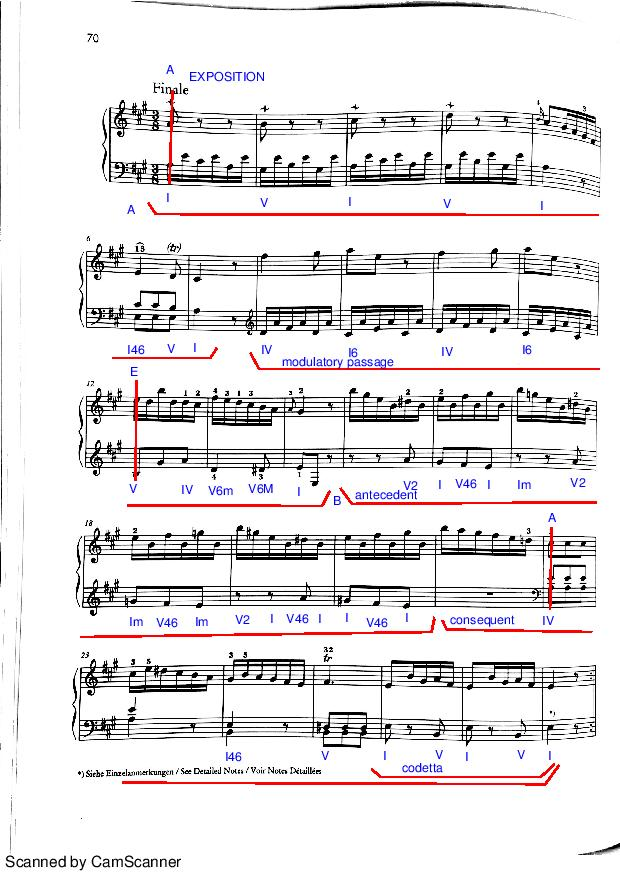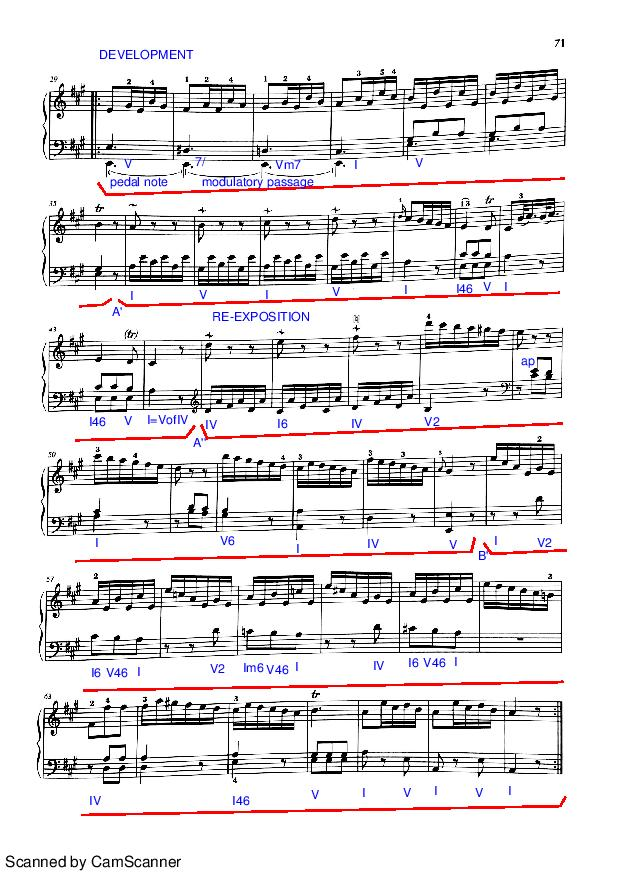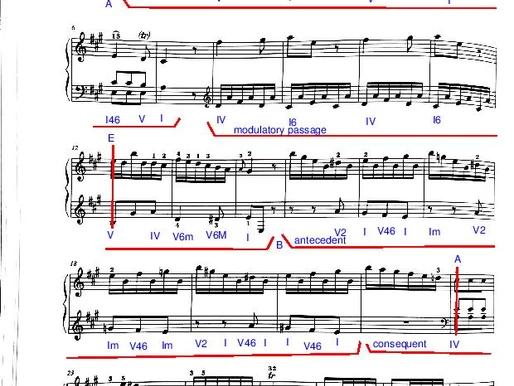Haydn Sonatas, Uncategorized
Haydn Sonata XVI12 – Finale Compositional and Harmonic analysis
Finale
This finale is written using a very economic deal of resources, this is clear even by looking at the notation itself. Formally speaking, the movement surprisingly follows a small sonata form:
- EXPOSITION: A-B
- DEVELOPMENT: modulatory passage and A’’
- REEXPOSITION: A’’-B’
Rhythmically-wise, the writing is extremely smooth, with collections of semi-quavers and quavers in spread out evenly through the score. “A” features an ascending scale at the pace of one note per bar, compensated by a descending one in diminution. The bass is committed to a basso di alberti (don’t confuse it with the basso-continuo which is a different concept)
The modulatory passage on bar 8 is based on “A”. The greatest part of the variations occurs in the treble, which is richer at the beginning of the phrase and can be summarized as a varied-diminished-version of the aforementioned slow ascending scale of “A”’s treble head. Bar 12 and 13 is a rhythmical “trocado” of bars 8 to 11.

“B” features contrary motion scales followed by descending arpeggios in its antecedent. In its consequent, consecutive descending scales spaced by repeated notes in the fashion of the ones used for “A”’s cadenza. The codetta is also very compact compositionally-wise, as the bass is written in contrary motion and diminution if compared to the treble.
The very short development section uses the material of the codetta organized in an ascending sequence settled on top of a dominant pedal note. The main goal is to reach “A’” in the tonic. “A’” works as a literal and extended version of “A”, leading to the re-exposition.
In the exposition section “A” leads to “B” which is exposed in the dominant. Following the same logic “A’’” starts in the sub-dominant, so it leads to A -tonic- instead of E. It is very clever to see how “A’” ends on A, dominant of D, making all the transition both seamless and musically effortless. “B’” is a plain iteration of “B” but on the tonic.
We should highlight this movement follows a refined musical-form which is not usually applied to sonata finales neither by Haydn or any other of the main stream XVIII composers.

#HaydnProject #PianolessonsLondon #JuanRezzuto #Haydnproject

